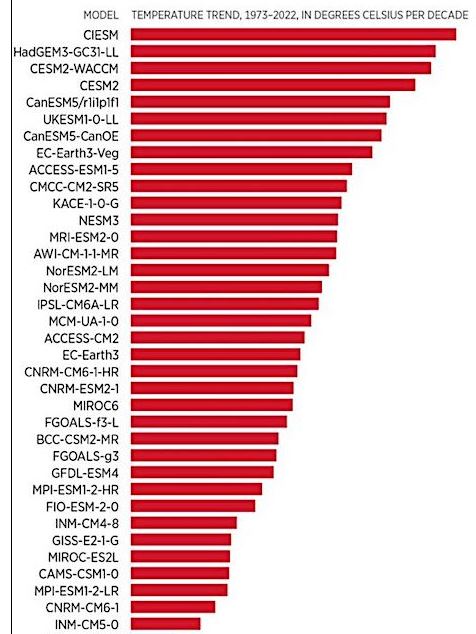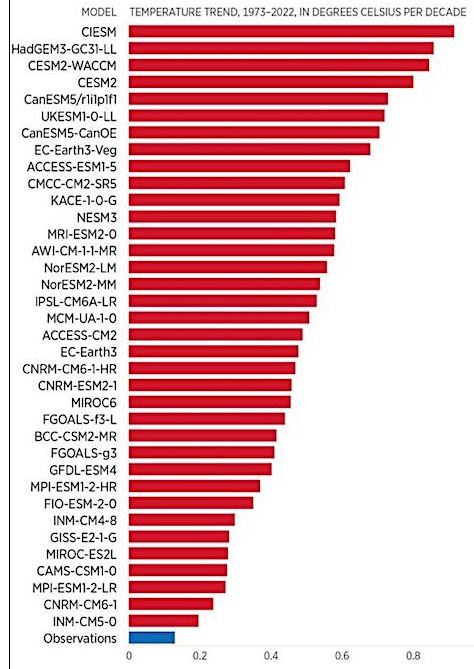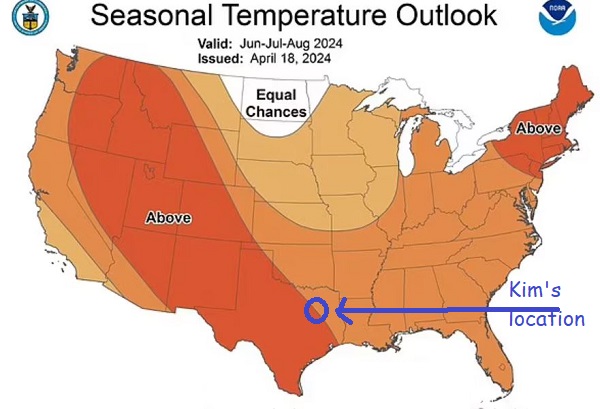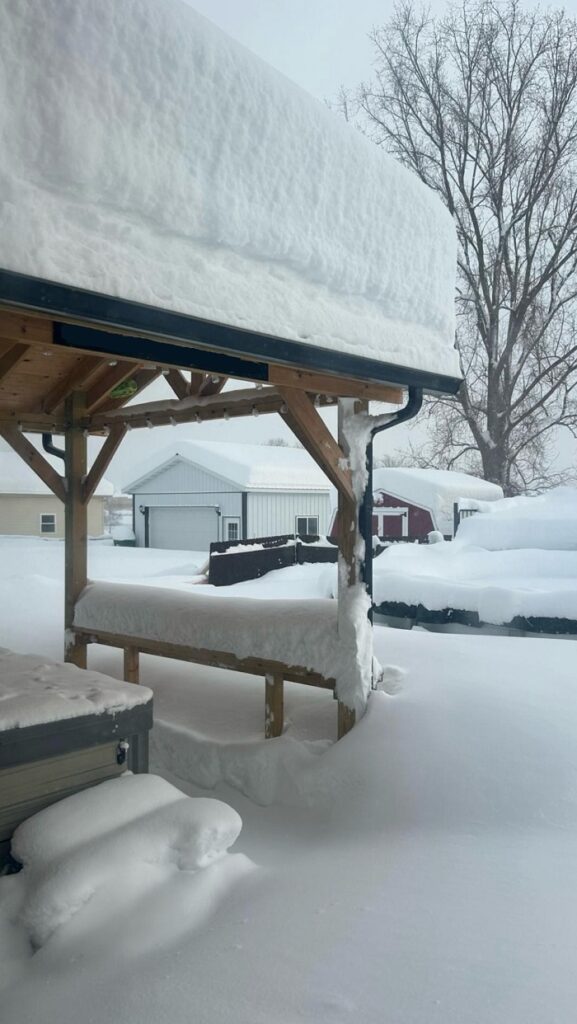No, that’s not when you shoot off all your ammo at the range and have to drive home with an empty gun (yeah, we’ve all done it, nothing to be ashamed about). What I’m talking about here is a series of predictive models which are not only wrong, but hopelessly wrong.
We all know (I think, except maybe for “climatologists”) that the way to test your model is to take all the history available except the most recent set, and feed that back data into your model to measure its prediction against the most recent data. (Back when I used to do this stuff for a living, we used to call it “using history to predict yesterday”).
So here are the conclusions of a whole bunch of predictive models used to predict future temperature change / increase for a specific area:

Looks kinda alarming, doesn’t it? (Okay. what’s alarming to me is the variation in predicted output between the models, but leave that alone for the moment.)
Now let’s drop the actual recorded data for the period and area into the graph, to see where it falls (same graph, plus actual):

Ummmm yes. The only model which came even close to reality (Observations) was “INH-CMS-0”, and even that one overstated actual temperature increase by a factor of almost 40%. Oops.
And by the way? A change of 1.6 degrees over an average decade over four decades (80 40 years) is what we model builders used to call “noise” — i.e. insignificant. Never mind a large area like the U.S. Corn Belt; an increase of 1.6 degrees in air temperature is insignificant in your house.
Here’s the whole analysis, which is long and kinda involved, even for me. The executive summary is what I’ve reproduced above.
And Robert Spencer gives us the summary of the executive summary, which is:

…or as we statisticians used to call it informally:

And John Hinderaker pointed out something else which should make everyone suspicious (it did me when I first looked at the chart):
Someone pointed out with respect to these data – I would credit him, but I can’t now find the reference – that if it were simply a matter of mathematical errors or inconsistencies, one would expect some models to err on the “hot side” and others on the “cold side” of actual observations. But that isn’t the case: all of the models run hot. That suggests that global warming alarmism is a political, not a scientific, movement.
Yup. Let’s worry about something else; this horse (Global Warming Climate Cooling Change©) is dead, and cannot be revived by MOAR HYSTERIA or STILL MOAR WHIPPING.











